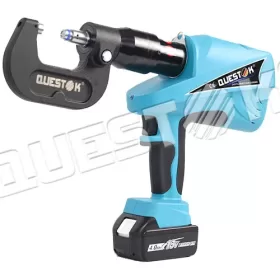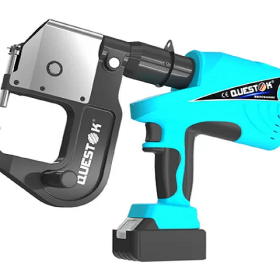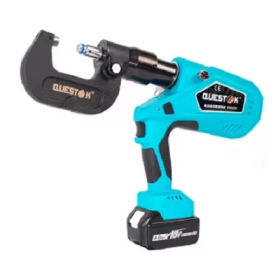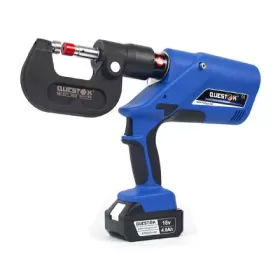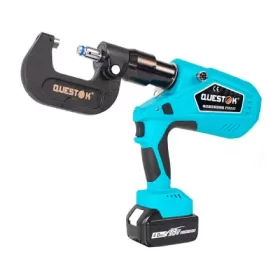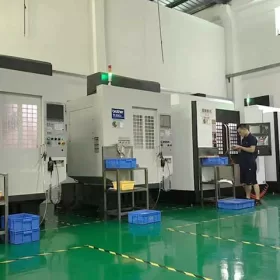Rivet Right, Every Time- Best Practices for Quality Assurance and Inspection in Electric Solid Riveting
In today’s manufacturing world, electric solid riveting has emerged as a critical process for joining metal components. Ensuring the quality and reliability of these joints is paramount, which requires meticulous attention to quality assurance and inspection. This comprehensive guide, “Rivet Right, Every Time: Best Practices for Quality Assurance and Inspection in Electric Solid Riveting,” will delve into the fundamentals of this essential process, providing invaluable insights to enhance your quality control practices.
Material Qualifications and Testing
The foundation of a robust electric solid riveting process lies in the quality of the materials used. Verify the material specifications of the rivets and workpieces to ensure compatibility. Conduct pre-production testing to evaluate the rivet performance and establish optimal process parameters. Destructive and non-destructive testing methods can assess joint strength, fatigue life, and structural integrity.
Equipment Calibration and Maintenance
Precision equipment is crucial for consistent and reliable riveting operations. Regularly calibrate rivet setters, controllers, and auxiliary equipment to ensure accurate force, displacement, and temperature measurements. Implement a preventive maintenance schedule to minimize downtime, maximize equipment lifespan, and maintain optimal performance.
Process Validation and Monitoring
Establish a validation process to verify the capability of the riveting system. Conduct periodic tests to confirm process stability and repeatability. Monitor the process parameters continuously during production using statistical process control (SPC) techniques. Analyze data to identify trends, optimize settings, and minimize deviations.
Inspection Methods and Standards
Thorough inspection is essential to detect defects and ensure the integrity of riveted joints. Implement visual, electrical, and mechanical inspection methods. Visual inspections can identify surface imperfections, misalignments, and improper rivet formation. Electrical inspections can verify conductivity and continuity. Mechanical inspections can assess joint strength, torque resistance, and fatigue life. Establish clear acceptance criteria based on industry standards and customer requirements.
Quality Record Management and Documentation
Maintain accurate and comprehensive quality records throughout the riveting process. Document all inspection results, process parameters, material certifications, and equipment calibrations. Use these records to track the quality performance of the riveting system and facilitate ongoing improvement initiatives.
Auditor Training and Certification
Invest in training and certification programs for quality auditors to ensure competence and consistency in inspection practices. Auditors should be proficient in the principles of electric solid riveting, inspection techniques, and quality standards. Internal audits can monitor compliance with established procedures and identify areas for improvement.
Continuous Improvement and Root Cause Analysis
Embrace a culture of continuous improvement by regularly reviewing and refining quality assurance and inspection practices. Conduct root cause analysis to identify and eliminate sources of defects. Seek opportunities to implement new technologies, optimize processes, and enhance stakeholder collaboration to drive quality excellence.
Conclusion
By adhering to the best practices outlined in “Rivet Right, Every Time: Best Practices for Quality Assurance and Inspection in Electric Solid Riveting,” you can establish a robust and reliable riveting process that ensures the highest levels of quality and reliability. This comprehensive guide provides a roadmap for achieving excellence in quality control, empowering you to deliver exceptional products and services to your customers.
- Company News
- Industry News
- Tag
- Tags
-
The Advantages of Questok Rivet Guns: Precision, Efficiency, and Durability
In industrial fastening applications, the choice of tools directly impacts productivity, safety, and long-term cost-effectiveness. Questok rivet guns have emerged as a standout solution for professionals across aerospace, automotive, and construction sectors. Combining advanced engineering with user-centric design, these tools deliver unmatched performance. Below are the key advantages that make Questok rivet guns a preferred choice:
-
Rivet Gun FAQ
Rivet Gun FAQ-SPR
-
Fast Assembly and Repair With Cordless Solid Rivet Gun
Questok cordless solid rivet gun stands out as a pivotal innovation, merging portability with power to facilitate efficient and effective fastening in a myriad of applications.
-
Redifine The Role of Self-piercing Riveting Gun Machine
Self-piercing riveting adopts high-speed mechanical fastening skill that joins thin sheet materials, typically steel and aluminum alloys.
-
The Latest Innovations in Clinching Tool Design
Explore the latest innovations in clinching tool design, redefining precision, efficiency, and versatility in material joining.
-
The Application and Maintenance of Self-Piercing Rivet Guns
Delve into the applications of self-piercing rivet guns in the automotive and aerospace industries and reveal the essential maintenance practices that ensure their accuracy and efficiency.
-
Rivetless Riveting Gun for Ventilation Duct Projects
The ventilation duct rivetless gun is a tool for riveting ventilation ducts without rivets.
-
Guide to Using Self-Piercing SPR Riveting Gun
In the automotive industry, self-piercing SPR (Self-Piercing Rivet) riveting guns are commonly used for joining metal components in vehicle bodies, including BMW vehicles.
-
Rivet Gun FAQ
Rivet Gun FAQ-SPR
-
Versatile Fastening- Applications of the Handheld Rivet Gun Across Industries
In the realm of fastening, the handheld rivet gun stands as a testament to ingenuity and versatility. Its ability to effortlessly join materials with sheer strength and permanence has revolutionized manufacturing and construction processes, leaving an enduring mark on diverse industries. Aerospace: Where precision and reliability are paramount, the rivet gun shines. In aircraft assembly, […]
-
Time-Saving Tools- Speeding Up Projects with Electric Blind Rivet Guns
In the whirlwind of project deadlines, every minute counts. But what if there was a tool that could dramatically reduce assembly time, giving you an edge in the race against the clock? Enter the electric blind rivet gun: your secret weapon for lightning-fast and effortless riveting. Electric blind rivet guns are the ultimate time-savers for […]
-
Streamlining Fastening- How an Electric Blind Rivet Gun Enhances Efficiency
Introduction In the realm of manufacturing and assembly, fastening plays a crucial role in securing components and ensuring structural integrity. Traditional manual rivet guns, while reliable, are often time-consuming and labor-intensive. The advent of electric blind rivet guns has revolutionized the fastening process, significantly enhancing efficiency and productivity. This article delves into the benefits of […]
-
The Role of Automation in Electric Rivetless Clinching
Electric rivetless clinching (ERC) is a lightweight joining process that eliminates the need for rivets or other fasteners. This can lead to significant cost savings and increased production efficiency. Automation plays a critical role in ERC, enabling high-speed and high-volume production. Automated Feed Systems Automated feed systems are used to accurately position the two workpieces […]
-
Why Choose a Universal Self-Piercing Riveting Gun for Your Projects?
In the realm of construction and fabrication, riveting guns stand as indispensable tools for creating secure and robust connections. Among the various types available, universal self-piercing riveting (SPR) guns have emerged as a game-changer due to their versatility and efficiency. This article will delve into the compelling reasons why choosing a universal self-piercing riveting gun […]
-
Why Choose Stainless Steel Hollow Rivets for Your Projects?
In the world of industrial manufacturing, choosing the right fasteners for your projects is crucial for ensuring longevity and reliability. Among the many options available, stainless steel hollow rivets stand out as a superior choice for a wide range of applications. This article delves into the compelling reasons why stainless steel hollow rivets are the […]
-
Top Trends in Electric Rivetless Clinching Guns
In the realm of fastening technology, electric rivetless clinching guns have emerged as a revolutionary solution for a wide range of industrial applications. These advanced tools offer several преимущества and capabilities, revolutionizing the way businesses approach their fastening needs. Adoption of Brushless Motors Brushless motors have gained significant traction in electric rivetless clinching guns due […]

